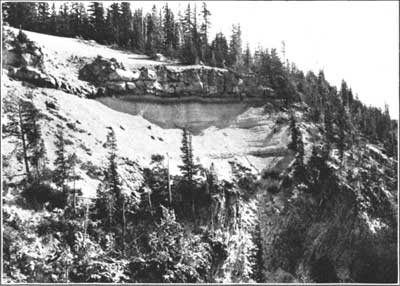Geological History of Crater Lake
There is another important feature concerning the kinds of volcanic rocks and their order of eruption and distribution about the rim of Crater Lake as shown on the accompanying reconnaissance map, figure 13, that is of much interest to the geologist.

All the older lavas comprising the inner slope of the rim, especially toward the water’s edge, are andesites. The newer ones, forming the top of the rim in Llao Rock, Pumice Point, Roundtop, and the Rugged Crest about the head of Cleetwood Cove as well as at Cloudcap, are dacites. Other later flows, all of which escaped from the smaller adnate cones upon the outer slope of the rim, are basalts. The eruptions began with lavas containing a medium amount of silica (andesites), and after long-continued activity lavas both richer (dacites) and poorer (basalts) in silica follow, giving a completeness to the products of this great volcanic center that make it an interesting field of study. Furthermore, the remarkable opportunity afforded by the dissected volcano for the examination of its structure and succession of lavas is unsurpassed. It should be stated, before dismissing the kinds of lava, that there are some dacites in the Sun Creek Canyon south of the lake that appear to be older than those upon the north side, and that the final lava of the region on Wizard Island is andesite
***previous*** — ***next***
.

